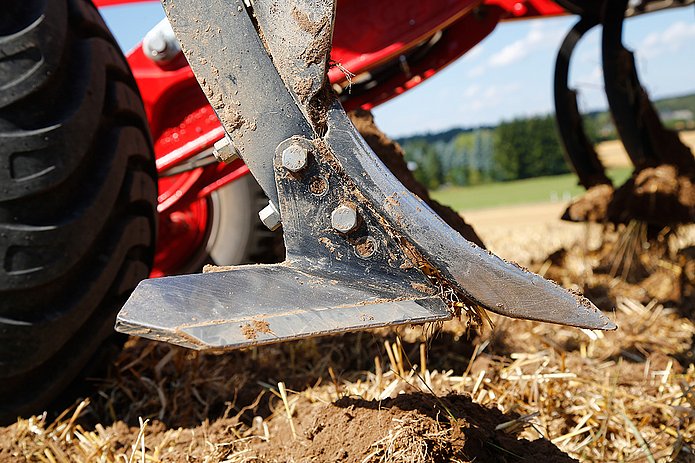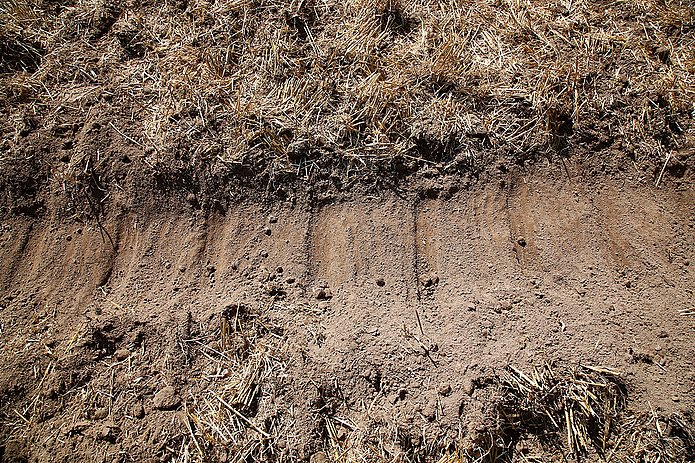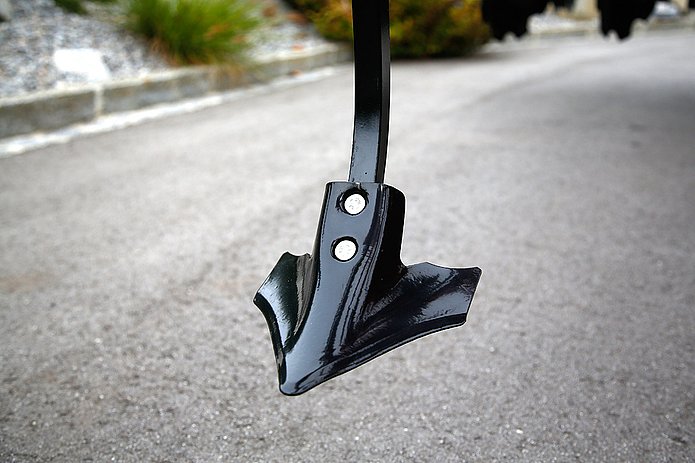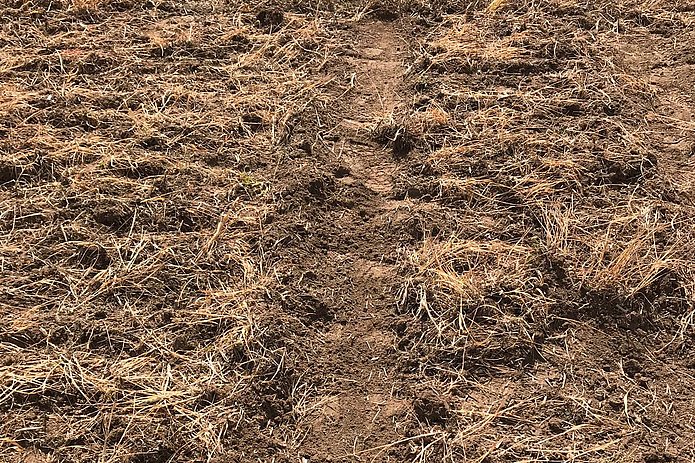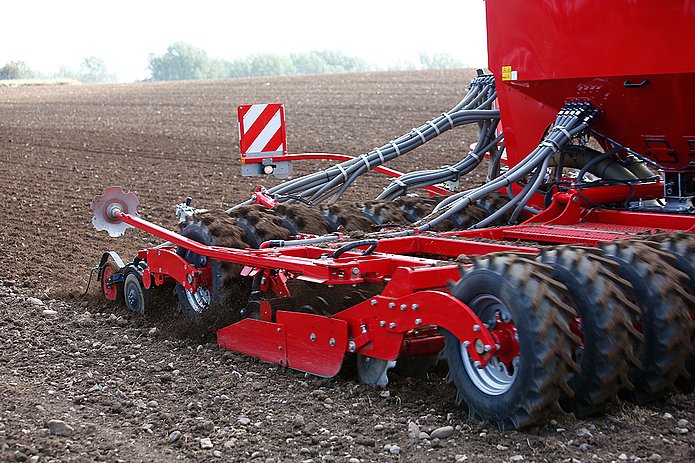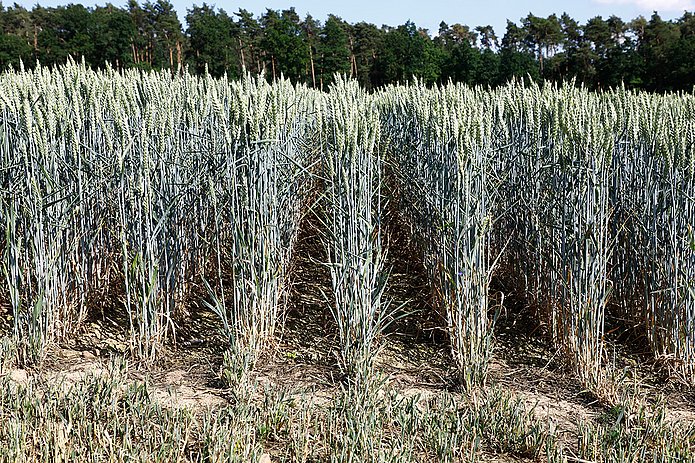Successful on organic farms
Does organic farming require special machines for tillage or sowing? The demands on agricultural engineering often are similar to conventional farming, but the emphasis is different. A lot of organic farms already work successfully with technology from HORSCH.
One main focus of organic farming is on weed control and the targeted mobilisation of nutrients. Especially with regard to the maintenance and increase of the natural fertility of the soil there are obvious parallels between conventional and organic farming. In these sectors you can rely on professional well-proven technology. Due to the changing prospects for future-oriented farming the requirements on agricultural technology increase and expand constantly. In order to create the optimum conditions for the crop, the machines used can contribute considerably by influencing directly or indirectly the biological, physical and chemical processes in the soil.
Tillage – basis for success
The advantages of conservation tillage are also recognised and used by organic farms. To improve soil fertility, air balance and water-holding capacity in the soil, organic farms more and more often rely on the cultivator.
Terrano – more than cultivating
The all-over cultivation of the soil is one of the most important demands made again and again by organic farms. If you consider the requirements that have to be met from a technical point of view it soon becomes obvious why the HORSCH Terrano line is most suitable. The basic requirement in the first step is a point system that is able to cut all-over and in a shallow way. The MulchMix point of the Terrano has been designed in such a way that for a spacing of about 30 cm (depending on the model deviations) it can be equipped with a 35-cm-wide wing. The wing can be mounted in two positions: the deep position for the typical stubble cultivation and the second position for a very shallow pass. The setting angle of the wing is almost parallel to the ground and thus guarantees a reliable earth flow starting at a working depth of 3 cm. The points work approx. 3 cm deeper and provide for the necessary traction in very hard or dry conditions. This positive effect was particularly noticeable in many regions last year. Another essential point for working shallowly is an exact depth control. The Terrano FX and GX are controlled very precisely via a packer at the rear of the machine. For the 3-point machines the tractor is responsible for the depth control at the front. The trailed Terrano GX are supported reliably by depth control wheels at the front and can follow the soil surface regardless of the tractor.
For a successful weed control, it is important that the plant is cut just below the vegetation cone. For different reasons two passages often might be suitable. During the first pass you work as shallowly as possible. A large number of plants are cut off. With the second pass you work somewhat deeper to guarantee an all-over dieback of the plants. The Terrano is also perfect for fighting root weeds, e.g. the thistle. One possibility is a surface cutting at approx. 12 cm. This is most effective when the horizontal network of roots is “famished”. You always have to pay attention to the fact that the weed potential also depends on the condition of the soil – thus tillage carries out part of the weed regulation which, of course, is embedded in a rotation system. If the machine is equipped with a harrow, weeds and grass weeds can be combed out on the surface to encourage their drying. Currently there is an increased demand for the Terrano FG with integrated chassis and three-bar harrow. This system might play a major role in the future. Another important point in organic farming is the growing of catch crops. If deep loosening is advantageous for the soil, this system is ideal for a catch crop that favours biotic engineering. A Terrano with a MiniDrill can be an elegant solution: Combined with a fertiliser mounting even coarse-grain seeds can be sown at the desired depth.
Cruiser – from the stubble to the seedbed
For more than three years farmers in different markets have been working with the new HORSCH Cruiser XL or SL. Behind the abbreviation XL hide the 6-bar machines from 5 to 12 m working width, behind SL the 4-bar 3-point machines in 4, 5 and 6 m working width. The core of all Cruisers is the HORSCH spring tine that combines the advantages of a mere spring tine (fine earth production and clearing itself) with those of a rigid tine (specified release force and safe keeping up of defined point angles). The release force of 150 kg is sufficient to exactly control the depth and the position of the Cruiser point with a tine spacing of 15 respectively 16 cm. The advantage: The working depth is kept up precisely – the basic requirement for shallow, all-over cutting. The point selection for the Cruiser ranges from 50-mm narrow point to 200-mm-wide duck foot point which in the future will be available with a complete carbide coating. This range of coulters guarantees a universal use of the Cruiser – from stubble cultivating, a mechanical „keeping the fields black” to seedbed preparation. For organic farms, beside the possibility of an all-over, shallow cut, the number of vibrations transferred by the machine to the soil respectively to the population where weed has to be fought often is essential. The more vibrations happen during one pass, the more successful is grass weed control. This is where the 4- respectively 6-bar design of the Cruiser shows its full potential.
Sowing with large-scale consequences
One development you can observe in organic farming is sowing in a wide row and mechanical hoeing. The wide row reduces the weed pressure in the row and partly achieves a better quality of the crop.
The functional principle of the HORSCH Pronto DC/AS guarantees an excellent seedbed quality and precise sowing. There are two aspects why the placement depth of the seed is such an important criterion for success in organic farming. On the one hand the requirements of a crop with regard to the placement depth have to be met perfectly to achieve a quick and homogeneous emergence and a high competitive force of the main crop. The second aspect becomes important when a „blind harrowing“ is to be carried out and the seed row must not be hurt. In this case, the HORSCH Pronto with the TurboDisc seed coulter guarantees that the sowing depth is kept up reliably. The TurboDisc seed coulter is controlled exactly via a depth control roll and is kept in the soil in an optimum way - even in difficult soil conditions and at high operational speeds.
The standard seed row spacing of the Pronto is 15 cm. Farms with hoeing equipment equip the Pronto AS and DC (as of 6 m working width) with two distributor towers and are then able to switch between a 15 cm and a 30 cm row spacing. The 30-cm row can easily be cultivated with the existing hoeing technology. This kind of pneumatics allows for sowing corners and pointed field boundaries that shall not or cannot be hoed easily with a narrow row spacing and for laying the straight parts of the field with a 30 cm spacing for the hoeing pass.
The Pronto line can be equipped with hoppers for up to three components. This option is becoming more and more popular, especially among organic farms. A double hopper in combination with a PPF equipment (Pronto 3 to 6 DC and Pronto 6 AS) allows for placing coarse-grain seed deeper by means of the PPF coulters. This can be very advantageous for mixtures or when cultivating catch crops.
